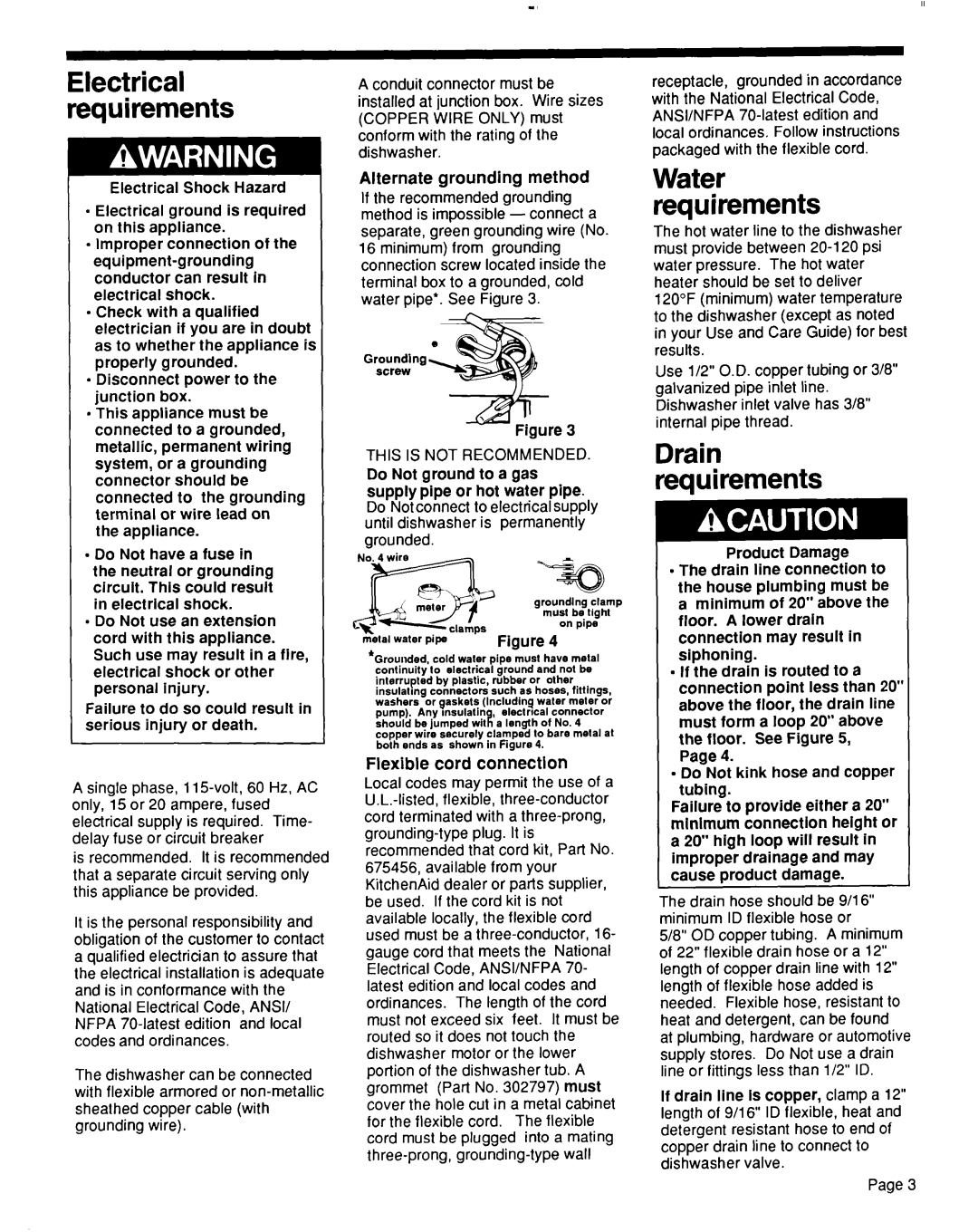
Electrical requirements
Electrical Shock Hazard
. Electrical ground is required on this appliance.
l Improper connection of the
l Check with a qualified electrician if you are in doubt as to whether the appliance is properly grounded.
l Disconnect power to the junction box.
. This appliance must be connected to a grounded, metallic, permanent wiring system, or a grounding connector should be connected to the grounding terminal or wire lead on the appliance.
lDo Not have a fuse in the neutral or grounding circuit. This could result
in electrical shock.
lDo Not use an extension cord with this appliance. Such use may result in a fire, electrical shock or other personal injury.
Failure to do so could result in serious injury or death.
A single phase, 115volt, 60 Hz, AC only, 15 or 20 ampere, fused electrical supply is required. Time- delay fuse or circuit breaker
is recommended. It is recommended that a separate circuit serving only this appliance be provided.
It is the personal responsibility and obligation of the customer to contact a qualified electrician to assure that the electrical installation is adequate and is in conformance with the National Electrical Code, ANSI/ NFPA
The dishwasher can be connected with flexible armored or
A conduit connector must be installed at junction box. Wire sizes (COPPER WIRE ONLY) must conform with the rating of the dishwasher.
Alternate grounding method
If the recommended grounding method is impossible - connect a separate, green grounding wire (No. 16 minimum) from grounding connection screw located inside the terminal box to a grounded, cold water pipe*. See Figure 3.
Grounding screw
xre3
THIS IS NOT RECOMMENDED. Do Not ground to a gas supply pipe or hot water pipe. Do Not connect to electrical supply until dishwasher is permanently grounded.
groundlng clamp must be tight on pipe
*eta1 water pipe | Figure 4 |
|
*Grounded, cold water pipe must have metal continuity to electrical ground and not be interrupted by plastic, rubber or other insulatmg connecton such as hoses, fittings, washers or gaskets (Including water meter or
pump). Any msulatin electrical connector should be jumped wit3 a length of No. 4 copper wire securely clamped to bare metal at both ends as shown in Figure 4.
Flexible cord connection
Local codes may permit the use of a
receptacle, grounded in accordance with the National Electrical Code, ANSVNFPA 70.latest edition and local ordinances. Follow instructions packaged with the flexible cord.
Water requirements
The hot water line to the dishwasher must provide between
Use l/2” O.D. copper tubing or 3/8” galvanized pipe inlet line. Dishwasher inlet valve has 3/8” internal pipe thread.
Drain requirements
Product Damage
9The drain line connection to the house plumbing must be a minimum of 20” above the floor. A lower drain connection may result in siphoning.
9 If the drain is routed to a connection point less than 20” above the floor, the drain line must form a loop 20” above the floor. See Figure 5, Page 4.
l Do Not kink hose and copper tubing.
Failure to provide either a 20” mlnlmum connection height or a 20” high loop will result in improper drainage and may cause product damage.
The drain hose should be 9/l 6” minimum ID flexible hose or
5/8” OD copper tubing. A minimum of 22” flexible drain hose or a 12” length of copper drain line with 12” length of flexible hose added is needed. Flexible hose, resistant to heat and detergent, can be found at plumbing, hardware or automotive supply stores. Do Not use a drain line or fittings less than l/2” ID.
If drain line Is copper, clamp a 12” length of g/16” ID flexible, heat and detergent resistant hose to end of copper drain line to connect to dishwasher valve.
Page 3
